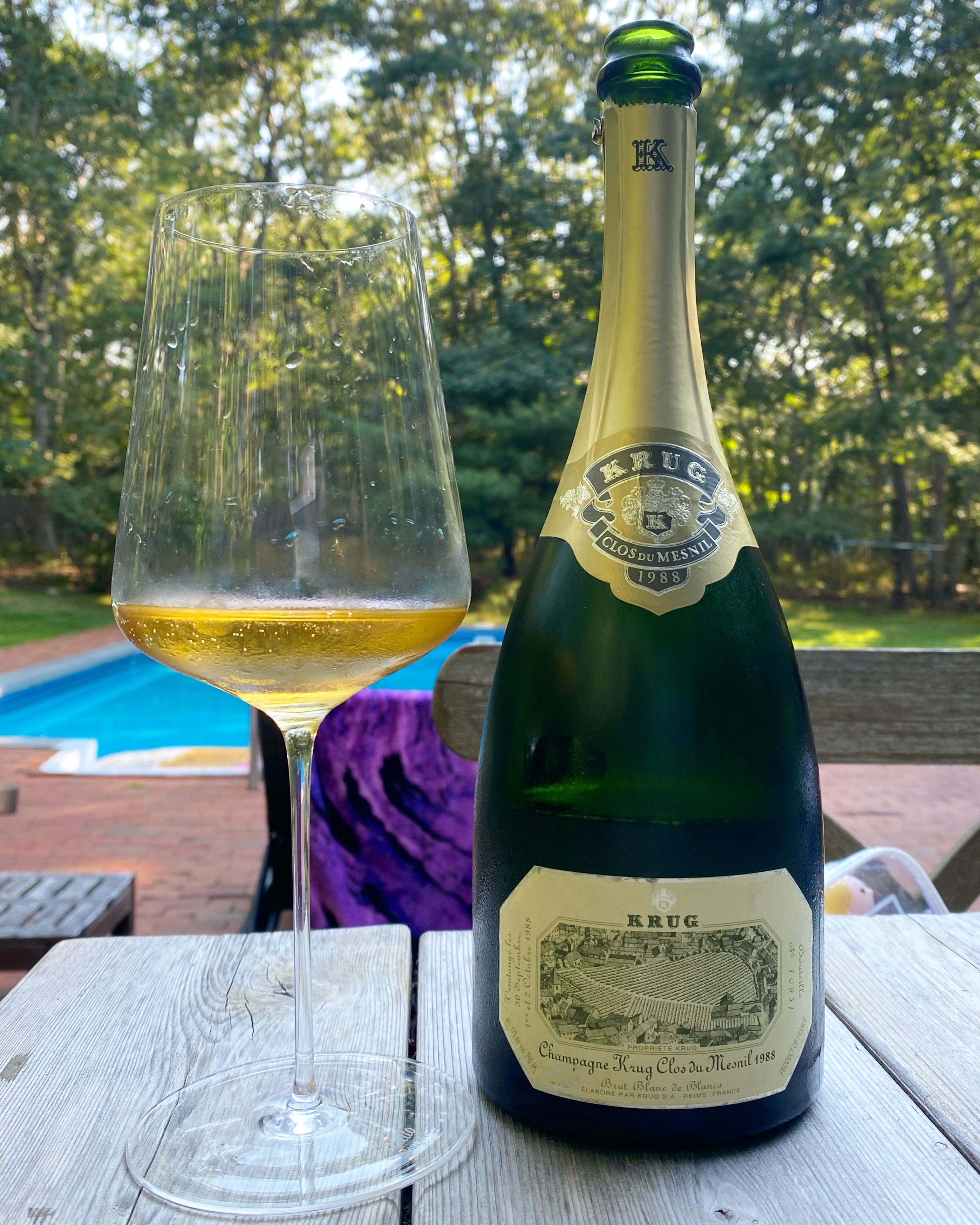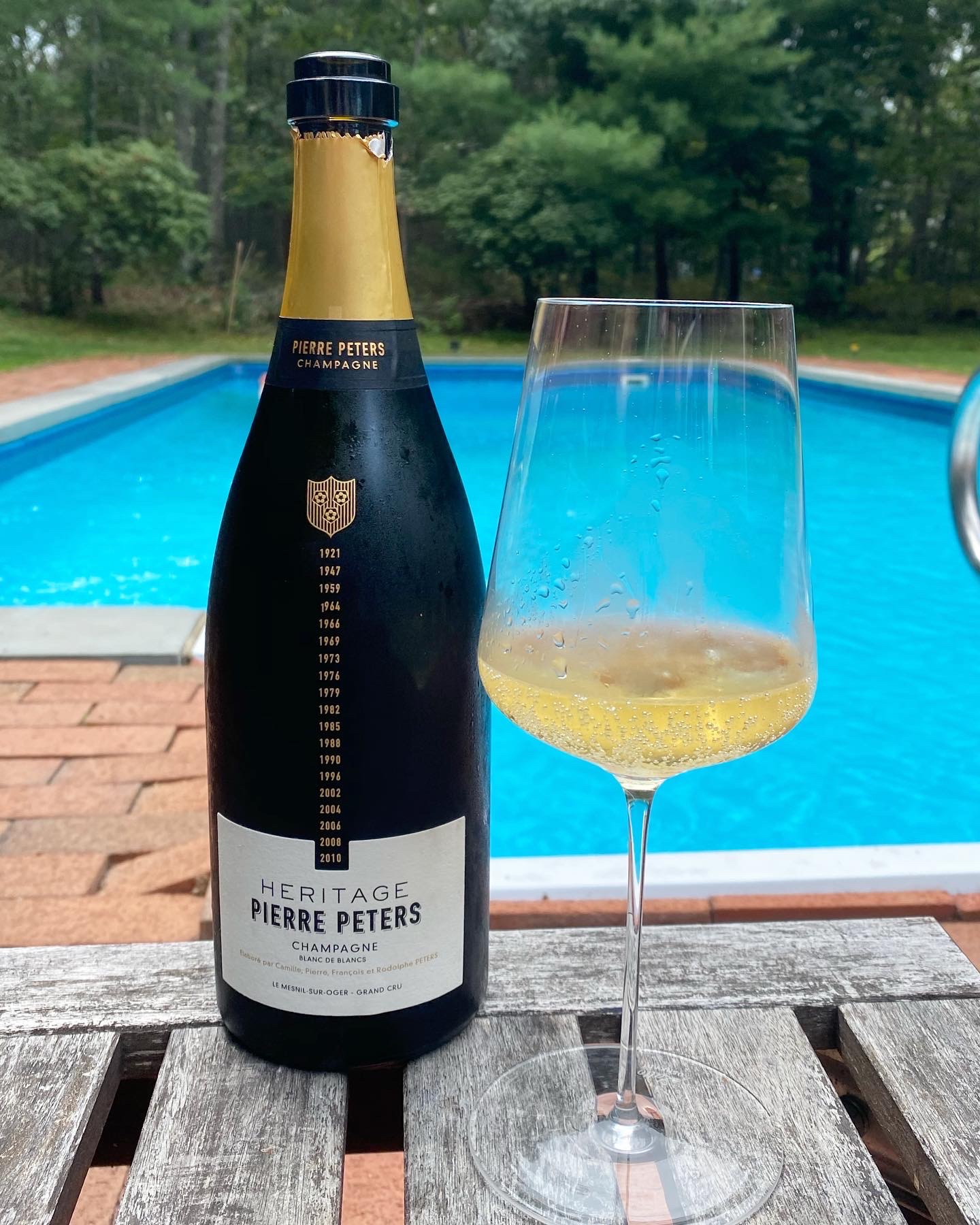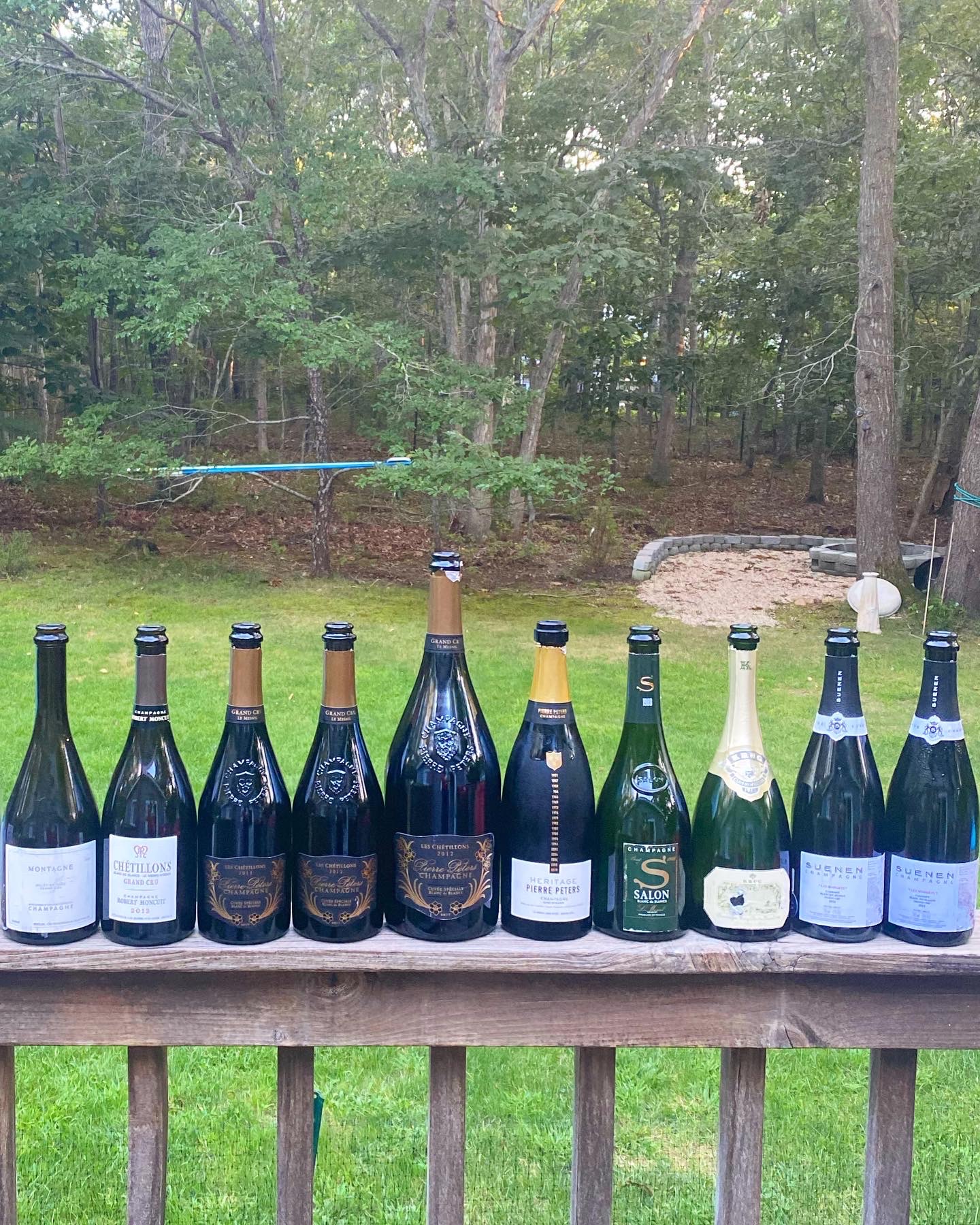Last weekend fellow wine nerd friends invited us to stay with them. While the kids ran around, we enjoyed a lineup of almost exclusively Côte des Blancs Champagnes over the course of several days (full disclosure: my favorite Champagnes are low-dosage BdB).
Krug Clos du Mesnil 1988: Golden color. Bottle in good condition - bubbles are still there. Orange peel dominated bouquet with chalk and grapefruit. Trademark Krug toast. Still crazy acidic. Honey sweetness. Layer after layer of subtle complexity and has extreme length. I understand why this is such a legend - well deserved. I can’t imagine this could get any better. WOTY candidate.
Salon 1988: Darker gold color, signs of oxidation. Sweet dried fruits on nose. Rich honey on the palette, which is still long. Could very well be the bottle, but it is past it’s prime, and not in the same ballpark as the Krug CdM. Still enjoyable for those who like mature Champagne.
Pierre Péters Les Chétillons 2012 en magnum: Rich nose of white flowers and citrus. On the palette, citrus but also a bit of nuts, apples, and a chalky minerality with robust acid. Overall, very generous. I know these wines get better with age, but this is very approachable now and already performing at a high level… it is going to be a challenge to not open too many when young. Dosage ~4g/L, from three different plots within the vineyard aged 40-70 years.
***()
Pierre Péters Les Chétillons 2013: Very different from the 2012, as the nose is much sweeter, the acid is even greater, and the flavors are more saline and sour apple. It opens more after an hour, but overall this is a more astringent wine than the '12, with an acid backbone that should allow for very, very long aging. Unlike the 2012, I am not tempted to open these near-term, but can’t wait to see what they mature into in the next 10-20 years. Dosage ~4g/L.
*()
Robert Moncuit Les Chétillons 2012: The second time this wine has been produced (after 2008), and the trademark citrus and chalky minerality of the vineyard are on display. The difference vs. Péters is in the nose: much more ginger and grassy notes here, and salinity is a bit higher. Medium-plus length. A bit tighter than the 2012 Péters, though still very pleasant. Can and should improve with time. zero dosage, from a 2ha parcel planted in 1956.
**()
Pierre Péters “Heritage” MV: This is a one-off project to celebrate the centenary of the estate, which is 60% reserve wines going back to 1921, and 40% Chétillons 2010, and is my first time opening one. Given the age of the reserve wines, I had expected a very mature taste, but this is amazingly fresh but at the same time highly complex. The bouquet here is really fun, as it is strong and changes significantly over the course of a few hours, starting with baked cake, vanilla, dried citrus, then eventually honeysuckle and toast. It has chalky citrus notes, and has the best of both world of fresh and mature Champagnes, with long length. Prominent acid means this can probably further improve with time, but this is exceptional today.
Suenen “Les Robarts” Cramant Grand Cru 2012 and 2013: I’m a little surprised Suenen doesn’t get much play on these boards given he makes terroir wines of high quality (and seems to be improving with each vintage). These both have nose of citrus, especially lemons, and pears. Rich with chalky salinity and medium+ acidity. Similar to the Chétillons 2012 vs. 13, the '12 here is more approachable and generous today, with the '13 being more austere. Both are several years from peak, but it was fun to check in on them. 1g/L
'12: **()
'13: ()
Bérêche Montagne Millésime 2002: the non-Côte des Blancs that snuck into the lineup. Pear-dominant nose, then honeydew and apricot, and has some tropical notes like mango. A bit sour at start but opens nicely over 30 mins. Medium length and still good acidity, but I’d argue at or maybe past peak at this point. Btl no. 980/1181.
**


